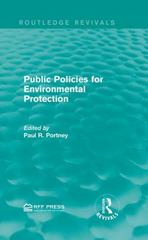Question
To work or not: You are counseling an incoming first-year student in ME who is deciding whether to work while in school or whether to
To work or not: You are counseling an incoming first-year student in ME who is deciding whether to work while in school or whether to take student loans. He needs to obtain $8,000 per semester for school fees. Fees are due at the beginning of each semester (2 semesters per year, each 6 months long). Assume that he has sources to take care of his other school expenses. Here are the scenarios: a. Student loans: The student takes out loans at the rate of 4.8% per year compounded daily. With loans, the student will graduate in 4 years and can immediately get a job that pays $68,000 per year. Assume, for simplicity, he gets his salary as one lump amount at the end of a work-year. His salary will increase by 3% per year. He will work for 43 years. He will start repaying student loans the month after graduation. Payments are monthly over a period of 10 years. b. No student loans and working: The student works throughout his schooling and doesn't need any loans. He still graduates in 4 years but due to issues caused by excess work load, the student can get a job that pays $62,000 per year after graduation (note the difference). Again, assume that he gets his salary as one lump amount at the end of a work-year. His salary will increase by 3% per year. He will work for 43 years. c. No student loans and working, but delayed graduation: The student works throughout his schooling and doesn't need loans but he takes things slowly to prevent burn-out and excess work load. He graduates in 5 years, and gets a job that pays $68,000 per year. Again assume that he gets his salary as one lump amount at the end of a work-year. His salary will increase by 3% per year. He will work for 42 years (note the difference) i. How much does the student owe in loans at graduation for option a.? ii. Compute the present worth for each of the options assuming an annual MARR of 6%. iii. Determine which of the three options is most beneficial to the student

Step by Step Solution
There are 3 Steps involved in it
Step: 1

Get Instant Access to Expert-Tailored Solutions
See step-by-step solutions with expert insights and AI powered tools for academic success
Step: 2

Step: 3

Ace Your Homework with AI
Get the answers you need in no time with our AI-driven, step-by-step assistance
Get Started


